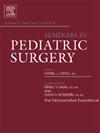复杂胆道疾病术中影像技术的进展
IF 1.4
3区 医学
Q3 PEDIATRICS
引用次数: 0
摘要
术中影像通过改善视觉效果和减少并发症,提高了小儿胆道手术的准确性。本文综述了术中胆管造影(IOC)、吲哚菁绿荧光胆管造影(FC)、腹腔镜超声(LUS)和内镜逆行胆管造影(ERCP)。IOC仍然是识别胆道异常的金标准,但也引起了对辐射暴露和手术时间的关注。与ICG结合的FC提供了一种无辐射的替代方案,具有更好的可视化和更短的程序,尽管其有效性取决于设备的可用性。LUS能够实时、无辐射地评估胆道解剖,但需要大量的操作人员专业知识。ERCP具有诊断和治疗双重作用,但存在胰腺炎等风险,需要专门培训。虽然每种模式都有其优点和局限性,但它们的联合使用可以提高术中决策能力。包括人工智能和增强现实在内的新兴技术可能会进一步改善结果。本文章由计算机程序翻译,如有差异,请以英文原文为准。
Advances in intraoperative imaging technologies for complex biliary disease
Intraoperative imaging has enhanced the precision of biliary surgery in pediatric patients by improving visualization and reducing complications. This review examines intraoperative cholangiography (IOC), fluorescent cholangiography (FC) with indocyanine green (ICG), laparoscopic ultrasound (LUS), and endoscopic retrograde cholangiopancreatography (ERCP). IOC remains the gold standard for identifying biliary anomalies but raises concerns about radiation exposure and operative time. FC with ICG provides a radiation-free alternative with improved visualization and shorter procedures, though its effectiveness depends on equipment availability. LUS enables real-time, radiation-free assessment of biliary anatomy but requires significant operator expertise. ERCP serves both diagnostic and therapeutic roles but carries risks such as pancreatitis and demands specialized training. While each modality has advantages and limitations, their combined use enhances intraoperative decision-making. Emerging technologies, including artificial intelligence and augmented reality, may further improve outcomes.
求助全文
通过发布文献求助,成功后即可免费获取论文全文。
去求助
来源期刊

Seminars in Pediatric Surgery
PEDIATRICS-SURGERY
CiteScore
2.80
自引率
5.90%
发文量
57
审稿时长
>12 weeks
期刊介绍:
Seminars in Pediatric Surgery provides current state-of-the-art reviews of subjects of interest to those charged with the surgical care of young patients. Each bimontly issue addresses a single topic with articles written by the experts in the field. Guest editors, all noted authorities, prepare each issue.
 求助内容:
求助内容: 应助结果提醒方式:
应助结果提醒方式:


